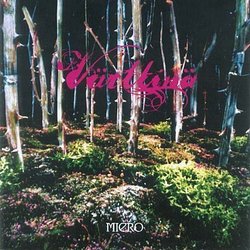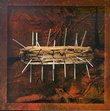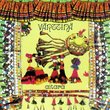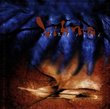| All Artists: Varttina Title: Miero Members Wishing: 1 Total Copies: 0 Label: EMI Europe Generic Original Release Date: 1/1/2006 Re-Release Date: 2/6/2006 Album Type: Import Genres: Folk, International Music, Pop Styles: Europe, Scandinavia Number of Discs: 1 SwapaCD Credits: 1 UPC: 094634606523 |
Search - Varttina :: Miero
 | Varttina Miero Genres: Folk, International Music, Pop
|
Larger Image |
CD DetailsSimilar CDs
|
CD ReviewsA Masterpiece S. Jacob | Milwaukee, WI | 08/04/2006 (5 out of 5 stars) "I suppose it's high time that someone write a rave review of Miero, and I'm happy be the first! First of all, Tad Hendrickson's snide remark in the Editorial Reviews ("...we'll have to take their word for it since the singing is (as usual) in Finnish.") is ridiculous. An English translation is provided, as it has been for the last several Varttina albums. Opera fans around the world don't seem to mind singing in a "foreign" language, and folk enthusiasts shouldn't either, especially since English would completely ruin the music! The many peculiarities of the Finnish language (umlauted vowels, glottal stops, rolled and clicking consonants) are an integral part of Varttina's unique sound, and the rhythm of the words and unusual rhyming schemes (often based on the Kalavela) have a large influence on the odd phrase structures and melodic contours of the music. I think more folk groups should be singing in their original language, not less, and I am very happy that Varttina has not succumbed to this pressure. In reading the many Varttina "Customer Reviews", there seem to be two basic "camps"-- Some prefer the earlier, more obviously folk- based albums like Seleniko and Aitara, and others think the group reached a high water mark with the powerful, atmospheric Ilmatar. I have a third opinion; Varttina is one of those exceedingly rare groups that has, in 23 years, gotten better with each succeeding album. What started out as a group of teenagers with an enthusiasm for folk music has evolved into a highly polished, intensely creative ensemble in which member could probably have a solo career. So, what makes Miero so great? Certainly one must start with the trio of vocals (Susan Aho, Mari Kaasinen, Johanna Virtanen) who have never sounded better. They have beautiful individual voices, and have worked very hard to sing exceptionally well together. An interesting fact is that though their vocal numbers have dwindled over the years (from 5 to 4 to 3), the vocal arrangments have gotten more creative, with their trademark, non-triadic "close" harmonies very much in evidence, and more instances of genuine polyphony and counterpoint. They are also much more likely to feature one singer for an entire song rather than the previous practice of belting out songs in unison. This allows for more contrast, and more subtle and nuanced singing. The band, too, is exceptional and far more than a simple "backup" to the singers. Great recent additions to the group are the propulsive drumming of Jaska Lukkarinen and the virtuostic, sonorous Bass work of Hannu Rantanen. Rhythm guitarist Antto Varilo and original member Janne Lappalainen (Bouzouki, various wind instruments) have many wonderful moments, and the group is rounded out by the virtuoso lead instruments of Marku Lepistö (accordion) and Lassi Logrén (fiddle). You simply will not find a better group of folk instrumentalists anywhere. But, as with all albums, it comes down to the actual music, and with Miero, Varttina has produced the strongest collection of songs in their career. The album starts right out with the stunning Riena-- The opening vocal is in 11/16 time and is varied each time it returns, a feature which is present thoughout Miero and points to Varttina's skill and creativity in their arrangements. A contrasting "B" section ("Kyyt kiroilee") features delicious, smeary accordion glissandi, mimicking the voices, and this section is also varied in its later appearance. But even this is not enough-- A third, instrumental section ("C") is in the astounding key of Bb major, miles away from the home key of E major. This is something that the "old" Varttina would never have even thought to attempt, and the skill with which Varttina moves in and out of this key is remarkable. One could spend this much time on all the songs, But I'll try to be more brief. The intro to Valhe creates an entirely different mood: Sinister, military-style drumming, a lonely flute, and vocals chanting the title as if over a great chasm. In the verse, the vocal and bass seem "off" from each other, a fascinating example of polyrhythm. In the central instrumental section, the vocals "back up" the band with some wonderful harmonies, a nice switch, and a feature of recent Varttina albums. Whispered "Valhe's" bring the song to a close. Mataleena returns to the 11/16 rhythm, a clear example of the words (in this case the title word) determining the music. There are endless small changes in the arrangment (particularly the bass), as instruments get added and vocal hamonies become richer, and a stunning re-harmonization towards the end ("Kum ol kolme poilatasta"). It also features an instrumental section that is remarkable in its rhythmic irregularity. Synti has a slight "Eastern" sound to it, perhaps because of the frequent use of modal scales. The middle section ("Syököön surma") is a great example of true polyphonic vocal writing, which also closes the song on a high note. Maaria features the superb vocalism of Susan Aho (I think!), and the delicate, intertwining lines of Varilo, Lappalainen, and Lepistö. This very beautiful song has (for me) a slight Spanish tinge, and features more great details in the arrangement. Listen in particular for Logrén's Fiddle countermelody (repeat of the opening section), and Lepistö's accordion "shakes" in the middle section repeat ("Kivisella kirkkotiellä"). The song Miero is Varttina's traditional a capella number, and features what sounds like throat singing similar to what is found on the Ilmatar album. Perhaps Lepistö, who wrote the music and is credited with a vocal, is the singer here. In any case it is very effective-- Perhaps we will hear more of him on their next album. Mierontie is one of those Varttina songs with a slight "pop" sound to it, but is saved by great performing, interesting arranging (like the low octave doubling at the beginnning), and numerous oddities in the rhythm. Mustat Kengät is a song that gives me chills every time. There are many reasons for this: A gorgeous, overlapping vocal intro which uses the last phrase of the verse, wonderful solo singing from Virtanen (I think!), more beautiful acoustic work from Lappalainen and Varilo, a verse that is beautiful and very surprising rhythmically , and an arrangment that is perfect and continually evolving. In particular I point to the rising bass line ("Muil on silkkiviitat"), and a surprise new section ("Mita miekin") which is perhaps the most beautiful section of all. It's a song that is so packed with gorgeous stuff that it takes many listens to fully appreciate it. And yet Lupaus is perhaps even more beautiful. This time Mari Kaasinen shines as the soloist, and there is another beautiful intro with delicate counterpoint between Violin, Accordion and Bouzouki. This is a song in which the two main sections closely mirror the words-- The opening section, in d minor, speaks of the loneliness in wandering far from home, while the middle section, in D major, speaks directly of the love the traveller has for his/her beloved. The minor sections, in particular, once again get substantial variation in the arrangement. The second verse has much richer vocal harmony and the accordion melody from the intro as counterpoint, while the final verse is treated quasi- a capella. The athletic bass of Rantanen provide an almost jazzy backdrop to Lumotar, which features delightful "trading off" of the melody between the three vocalists. This is one of those rapid-fire "patter songs" for which Varttina is famous, and this one certainly does not disappoint. The basic meter of the song is 7/8, but with many irregularities. The first middle section is a wild riff for accordion and violin that is even crazier rhythmically, while the second ("Soustut miun sulooni") surprises us in the regularity of its rhythm (4/4) and the bizarreness of its key (Bb major in an A major song). The song continues to surprise by having the return of the verse ("Panen kintut kiiltamaan") go up the chromatic scale to B major, ending the song in a different key than it began. Also traditional for Varttina albums is an instrumental number, in this case 9 Lukkoa. An interesting feature of the song are the numerous bass glissandi, and the unusual doubling of the melody, with guitar, flute, violin and even bass getting their turn, while the accordion provides harmonic backing throughout. One cannot help but think that the composer of this song, guitarist Varilo, had something to do with this arrangement, but it does give the piece a unique sound. Then follows another a capella number, Eerama, which is one of Varttina's best. Built out of contrasting slow and fast sections, it is a perfect example of the groups non-triadic approach to harmony. Virtually all the phrases (especially the declamatory "Eeramas") end with what would, in traditional "western" terms, be a dissonant harmony. It's a fascinating and very compelling two minutes of music. And finally, in an album full of great songs, Varttina closes with one off its greatest ever, Vaiten Valvoin. Gorgeous solo singing (by Vartanen again, I believe) and the mystical sound of the bouzouki start things off. Soon, the plaintive sound of Lappalainen's sax joins in. The basic melody is very simple and folk-like, with a beautiful turn of phrase in its middle section ("Katsoin kaunokaistani"). It is in this song that Varttina's practice of continuous variation is at its most compelling. The second verse features complex, dissonant vocal harmonies, unsettling, military-style drumming, and stabbing, shockingly dissonant accordion chords. After a sax solo (in the distant key of Eb minor), the third verse returns even more powerfully, with thunderous drumming from Lukkarinen. However, the final return of the middle section (Käet kätket") disappears to nothing, with only solo voice and accordion in a serene, beautiful duet. Gradually, other instruments are added, including some gorgeous backup vocals that simply float to the heavens, before the song fades into nothingness. It is an extraordinary way to end an album. The short version is, YES, buy it! Even if you know nothing of Varttina, this album is a great place to start. If you love great singing, great playing and great folk music, it is a must buy! Then take your choice of the other Varttina albums-- They're all worth having. Scott Tisdel" Less dramatic but still interesting fare James B. Whitney | Minneapolis, MN. USA | 03/07/2006 (4 out of 5 stars) "The first album I got by Varttina was Seleniko and, in my opinion , it is still their best. Miero is a good disk with the expected vocal mastery Varttina have shown on all of their recordings. The harmoies they produce are unusual and very mystical. The production is also well done balancing the voices with the instruments supporting them. Although Varttina are known mainly for the extraordinarey female vocals, their players of instruments are also remarkable in their own right. It is for this reason that I am giving this disk four instead of five stars. For some reason, it seems that the instrumental arrangements are much more sparse on Miero tham on previous releases. The percussionist for this group has to be one of the best in music, regardless of genre but on this recording, he is only rarely turned loose. This is also true of the fiddle and accordion as well as ehe other instruments. They are now nore in the role of playing back-up which serves to weaken the impact of the songs which are, overall much less manic than those on previous Varttina cds.
But all that having been said, Miero is still well done. Check out the samples on amazon.de if there are none available yet on amazon.com. The songs have the ancient mystical feel that I have come to expect from Varttina although, as I said before, the music is more restrained. I think that Varttina fans will like this disk as will many not already familiar with the band however I would recommend Seleniko or Ilmatar for the uninitiated." |

 Track Listings (13) - Disc #1
Track Listings (13) - Disc #1



